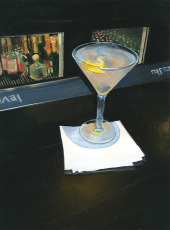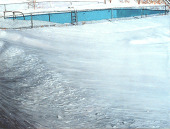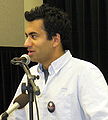This month, the John Simon Guggenheim Memorial Foundation* announced the awards of its very prestigious, much-coveted Guggenheim Fellowships. It gave the laurel to 180 people, including 20 in the “Fine Arts” — aka visual arts — category (plus more in photography and dance/performance art). I got to wondering, who are the winners? And what kind of work is being chosen for support?
One image can never portray the work of an artist. But there is a limit to how much time you’ll spend here, so here’s a look at one or two works per artist — a teaser, so to speak — plus links to their websites or galleries for further viewing:
–Michael Ashkin,
 of Ithaca,
of Ithaca,
N.Y., is Director of Graduate Studies and an Assistant Professor in Cornell’s Department of Art whose work has been shown at Andrea Rosen Gallery. Right is Prison ( No. 3), from 2008. You can view more works of his works on his website.
–Dike Blair, of New York, is an adjunct professor at the Rhode Island School of Design. Here are two untitled gouaches from 2008, and there’s more at his website.




 While I was away, the White House did it again — made a stealth arts appointment. Actor Kal Penn (right), who served on candidate Obama’s arts-policy committee, is the new “associate director of public liaison” in the White House, focusing on Asian & Pacific communities and arts communities. The Washington Post had a gossip-column item on this earlier this month, crediting Entertainment Weekly, and yesterday I confirmed it with the White House press office. There’s been no announcement, and spokesman Shin Inouye said he did not know when Penn would start.
While I was away, the White House did it again — made a stealth arts appointment. Actor Kal Penn (right), who served on candidate Obama’s arts-policy committee, is the new “associate director of public liaison” in the White House, focusing on Asian & Pacific communities and arts communities. The Washington Post had a gossip-column item on this earlier this month, crediting Entertainment Weekly, and yesterday I confirmed it with the White House press office. There’s been no announcement, and spokesman Shin Inouye said he did not know when Penn would start.